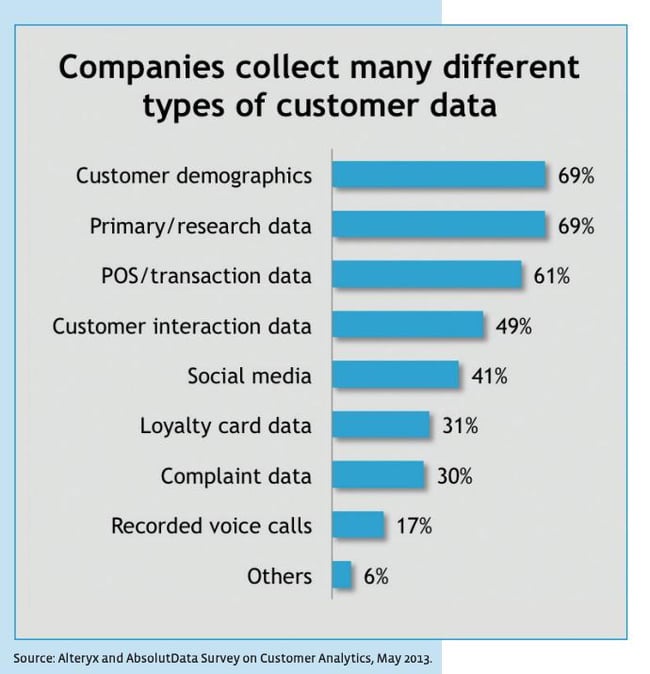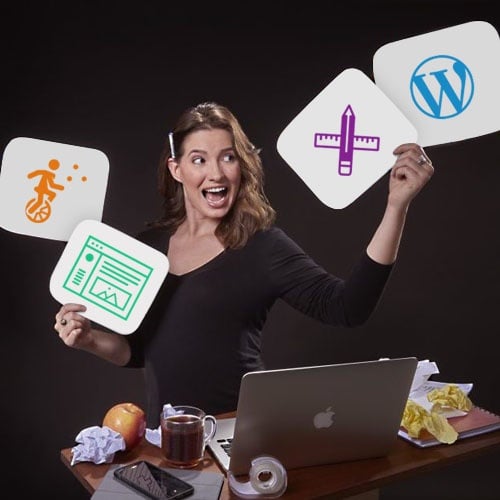How to Use Omnichannel Analytics to Deploy and Track Products

Keep the good stuff coming
Subscribe to our blog newsletter and get monthly content that helps you manage product data smarter.
No spam. Just real value.
Many commerce pros will remember the four P’s around which retail revolved in the not-so-distant past: product, price, promotion, and placement.
You used to create a product, do a little market research to find out what price consumers would be willing to pay for it, use advertising to promote your product on a few channels, and place it where customers could buy it. And buy it they would.
But today, the internet has flipped that dynamic on its head. Consumers are educated and they’re driving demand. And now that around-the-clock connectivity has become the norm, they’re shopping on every imaginable channel and device—all the time.
Take, for example, how I might shop for a yoga mat. A decade ago, I’d probably show up at a studio for a yoga class, purchase one of the few mats available there, or stop in at a store on my way home. If I didn’t like the selection or there weren’t any mats stock, I’d just try again next time.
For better or for worse, that process is a lot different today. Now, once I become aware that I need a yoga mat, I’ll head to a search engine or social media channel for research. Over the next few days, I may spend a few minutes (or hours, let’s be honest) here and there clicking on a variety of mats, reading reviews, and comparing prices. Once I finally make my selection and either put it in my virtual cart or visit a brick-and-mortar location (after checking in-store availability, of course) to purchase it in person—you better believe I’m not going to be happy if the option I want is unavailable or is going to take several weeks to arrive.
Modern shoppers have high expectations for retailers. And if you can’t meet them, you can say buh-bye to a purchase, a great review, and a loyal customer.
But it’s not impossible to get it right. If you want to be competitive and not only win but keep awesome customers, it’s time to use omnichannel analytics to efficiently deploy and track inventory, keep customers happy, and get your budget back in the black.
How to Use Omnichannel Analytics to Successful Deploy and Track Products
You already know that omnichannel retail gives you the opportunity to provide consumers with personalized, consistent shopping experiences across every device and channel. Similarly, omnichannel analytics empower ecommerce pros to integrate a shopper’s digital DNA—data they leave behind when searching your website, emailing you, interacting on social media, making a purchase, and more—into every step of their journey in order to deliver personalized offers and make sales.

Instead of relying on a handful of disparate marketing metrics like email opens and coupon downloads, omnichannel analytics enable you to combine a wealth of online data from a variety of channels. Thanks to these cross-channel insights, you’ll be able to craft tailored marketing campaigns, rectify any inefficient distribution and operational tactics, and optimize the variety and availability of your inventory.
And, as it turns out, Forrester Consulting found that transparency and optimization in product deployment and tracking are important to both shoppers and retailers.
In a survey of over 1,500 shoppers and 250 retailers in Europe and the U.S., 73 percent of consumers said they would visit a store if they could see online that a product was available while only 36 percent would drop in if that info wasn’t online. Half of the respondents expected to be able to buy online for in-store pickup and nearly as many reported they’d be happy to have out-of-stock items shipped to their home. A whopping 70 percent expected store associates to have a mobile device on-hand to answer inventory questions.
It’s pretty clear that consumers expect retailers to have transparent, analytics-enabled fulfillment systems in place. And retailers found that meeting this expectation provided a significant boost in business.
Nearly every retailer who responded reported that enabling ship-from-store provided a strong lift in online profits. Nearly 80 percent said the same service drastically cut down on fulfillment costs while nearly 90 percent reported it also boosted customer satisfaction.
The proof is in the numbers—using omnichannel analytics to effectively deploy and track products is better for both shoppers and ecommerce sellers.
Here’s how to get started.
Organize All Your Data in One, Accessible Place
Whether your enterprise-level business is plagued by silos or your compact team is just so dang busy you don’t have time to set up or stick to a system—many organizations struggle to get all the right customer data in the right place at the right time. Typically, your point of sale records will live in one place, customer service requests in another, and inventory info in yet another. So, in this step, you’ll need to bring all of this data together in order to develop omnichannel analytics that inform product distribution and tracking.
Connecting data is a heavy lift, but it’s also a vital first step in making any data-driven process useful. Make sure you’ve got this one nailed down before you move forward.
Maximize The Value of Your Data with Omnichannel Analytics Software
Getting actionable insights from customer data is tough. That’s partially because most ecommerce managers and marketers don’t have deep data science training and partially because there’s just so dang much data these days. If you haven’t already, this is when we’d recommend bringing in the big guns.
To maximize the value of your customer data, you’ll want to invest in an omnichannel analytics software that is able to connect to a variety of sources. With the right tool, you can craft a unified view of your shoppers, enrich your own data with public data (which you can purchase, access from U.S. Census results, etc.), and segment your shoppers based on their behavior and potential.
Once you’re able to extract real information about shoppers and leads from your data, you’ll be able to predict trends and make informed decisions about which items to restock, how much to restock, and when to restock.
Build Upon Your Omnichannel Analytics Insights to Improve Product Deployment and Tracking
Even the most basic inventory decisions become complex when we’re talking omnichannel. That’s where omnichannel analytics come in to play!
Omnichannel analytics are useful during several stages of the product lifecycle. Not only will you be able to see what works when it comes to marketing, but you’ll also gain visibility into key product distribution stats so you can make more informed inventory decisions. As you collect more omnichannel data over time, you’ll be able to see patterns that will help you adjust your merchandise buying or production habits to maximize revenue while still delighting your customers.
Plytix: The Only PIM with Built-In Omnichannel Analytics
Omnichannel retailing centers on the modern customer’s expectation to be understood. They want to be served the right product at the right price, when and where they need it. But if you’ve truly gone omnichannel—you know what a daunting task it can be to keep up with this demand while striking the perfect inventory balance.
That’s why we built Plytix—the only product information management (PIM) software that provides product deployment and tracking analytics for ecommerce marketers and managers.
In fact, Plytix’s CODA framework can be applied by any company regardless of size and technology. It all starts with the ability to centralize all your product information, such as files and images, in one location where all the right employees can easily access it. Next, you can use Plytix to optimize your products so they’re sexy and sellable. Plytix then helps you distribute products effectively by sharing key inventory info with resellers, marketplaces, ad platforms, sales teams, and more so you’re always able to strike a balance between enough inventory and enough cash. Finally comes the analyze stage in which Plytix’s omnichannel analytics empower users to track individual product performance across owned and different third-party channels so you can make smart marketing and supply chain decisions.
We guarantee that Plytix will improve your company’s revenue per employee. Don’t just take our word for it—set up your account in just minutes, no credit card required.

What if your product data actually worked for you?
We’ll show you how Plytix helps you stop fixing data—and start using it.
Related posts
Keep the good stuff coming
Subscribe to our blog newsletter and get monthly content that helps you manage product data smarter.
No spam. Just real value.





Think others should see this?
Go ahead and share it.